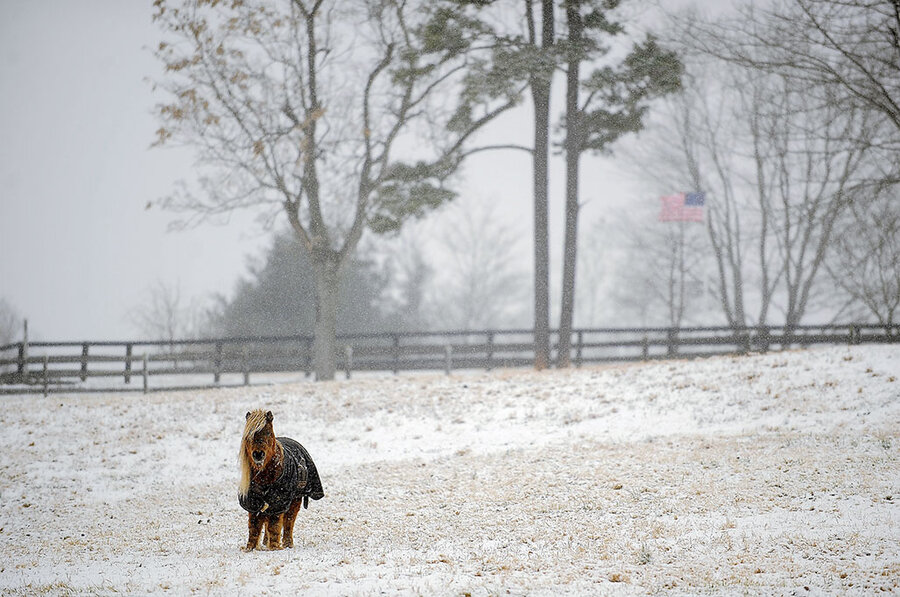Horsing around in the cold
Loading...
An upstate New York childhood molded me to be almost impervious to extreme winter weather – and wise to the potential perils of life out in it. Though the cold months in my current home in south-central Indiana aren't generally as bitter or as snowy for as long as they were (and are) in Rochester, the recent repeated descents of the polar vortex have put everyone from the Midwest to the Eastern Seaboard in the same icy boat.
It is just the kind of subzero weather I know how to work in, having played in it in my youth. One wraps in layers from head to toe, leaving only an eye slit exposed. Thermal socks are doubled in boots roomy enough not to impede circulation. Gloves as thick as bear paws are donned.
Thus prepared, I close the cabin door behind me to spread hay for our cows and draft horses and break the ice on the water tank, chores that can take an hour when all movement is clumsy and slow.
I do fine. It's the animals I worry about. Charlie scoffs at my concern and suggestion that we look into blankets for the Belgian horses this year or stall them for a few of the coldest days.
"They won't tolerate being separated from the cows," he argues. "And they know where to go to get out of the wind."
I know he's thinking of the deep wooded pockets of the stream valley and the wind-blocking cedar thickets where the ground often remains snowless and the air is quiet, if frigid.
Still, I'm thinking blankets, and consult with Rosie at the feed store.
She all but echoes Charlie, but agrees to look into ordering two horse blankets large enough for Belgians. "I'd love to sell you blankets," she says, "but Belgians don't really need them the way smaller horses might – not if they're fed properly." And she knows they are.
Seeing my lingering indecision, she adds, "I've got one at home you could try if you find one of them shivering."
But I don't. As the temperature bottoms out at 8 degrees below zero F. one morning, I find Buck stretching and yawning, steam pouring from mouth and nose. Mary stands by serenely as the sun edges over the horizon. The cows and our massive steer Indy clomp up to the hay shed to await the bales I'll spread.
The next morning it's up to minus 4 degrees. The animals eat and follow me to the tank, half full of solid ice. The pump still works, and all the animals drink the spectacularly cold water I bucket in.
And then I see it, the evidence that convinces me once and for all that with enough hay, natural shelter, and their own insulated coats, the horses – like the cows – tolerate bouts of bitter weather far better than I thought they could:
Buck has folded down to his side, rolled onto his back, and begun to wriggle furiously against the ice-crusted snow blanketing the unyielding ground. Satisfied with his back scratch he rises, shakes, and sighs.
As if that weren't a clear enough statement, the impression he's left in the snow seals it. It's almost triple the size of the snow angels I used to make as a child reveling in the cold lap of winter. But the shape is uncannily similar, wings and all.
I could swear the horse was trying to tell me to relax.





